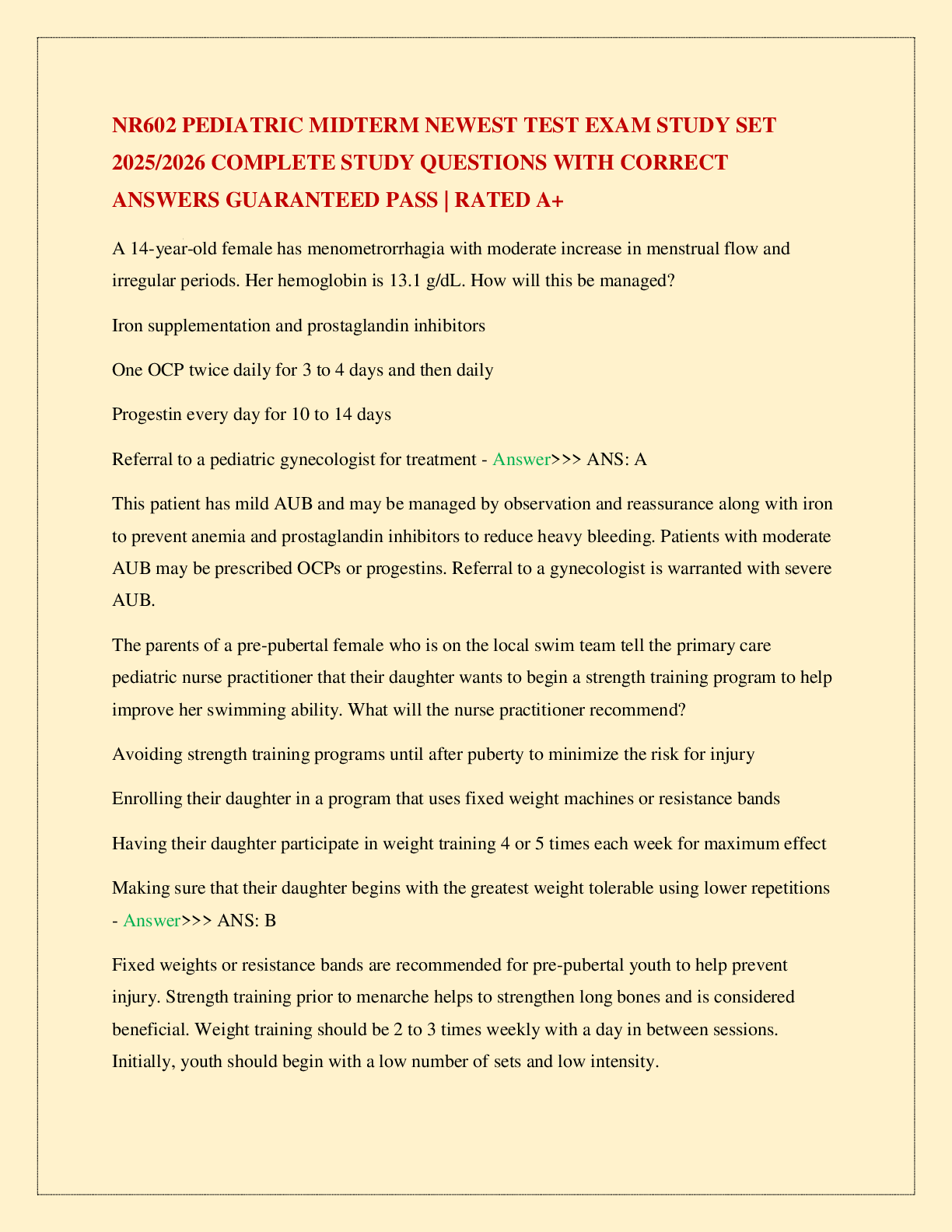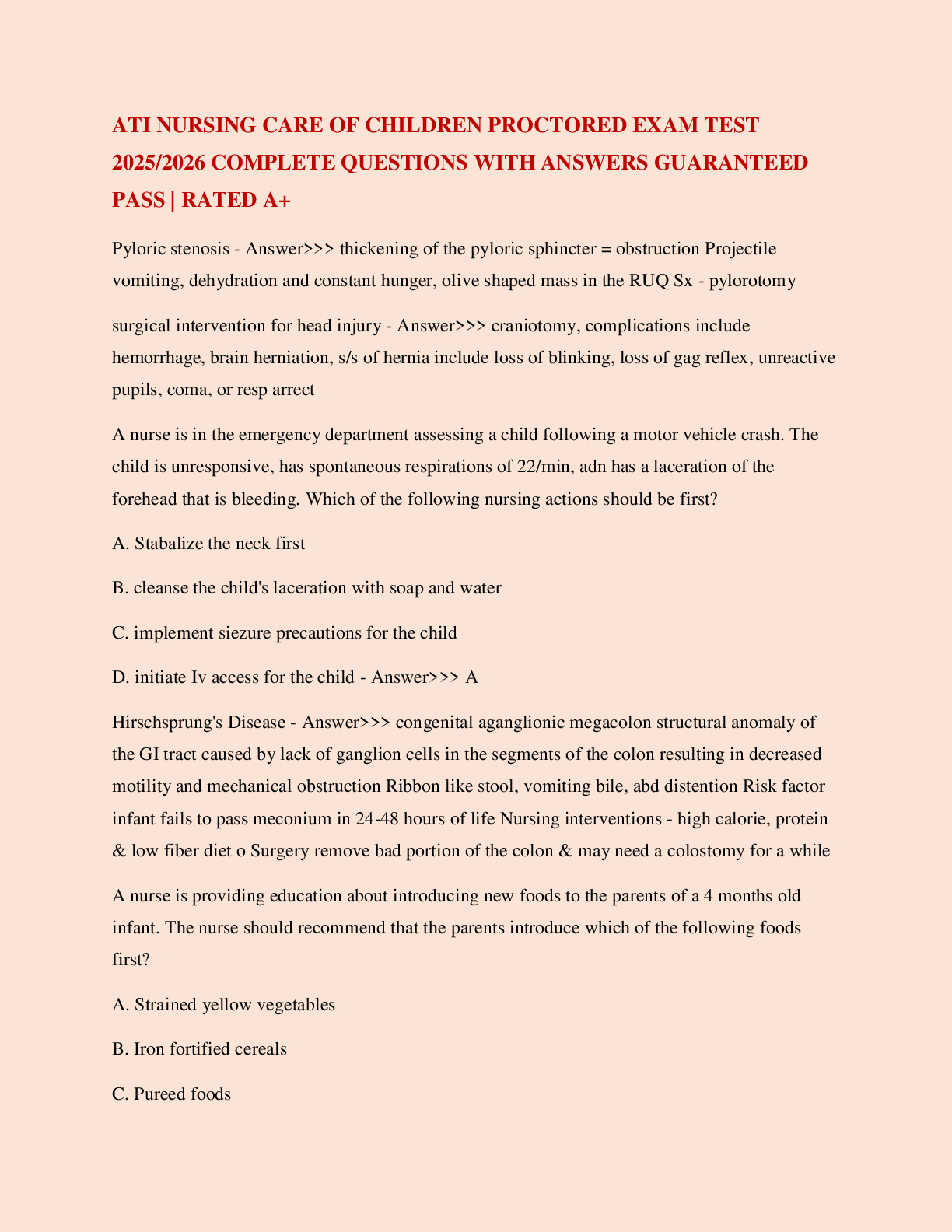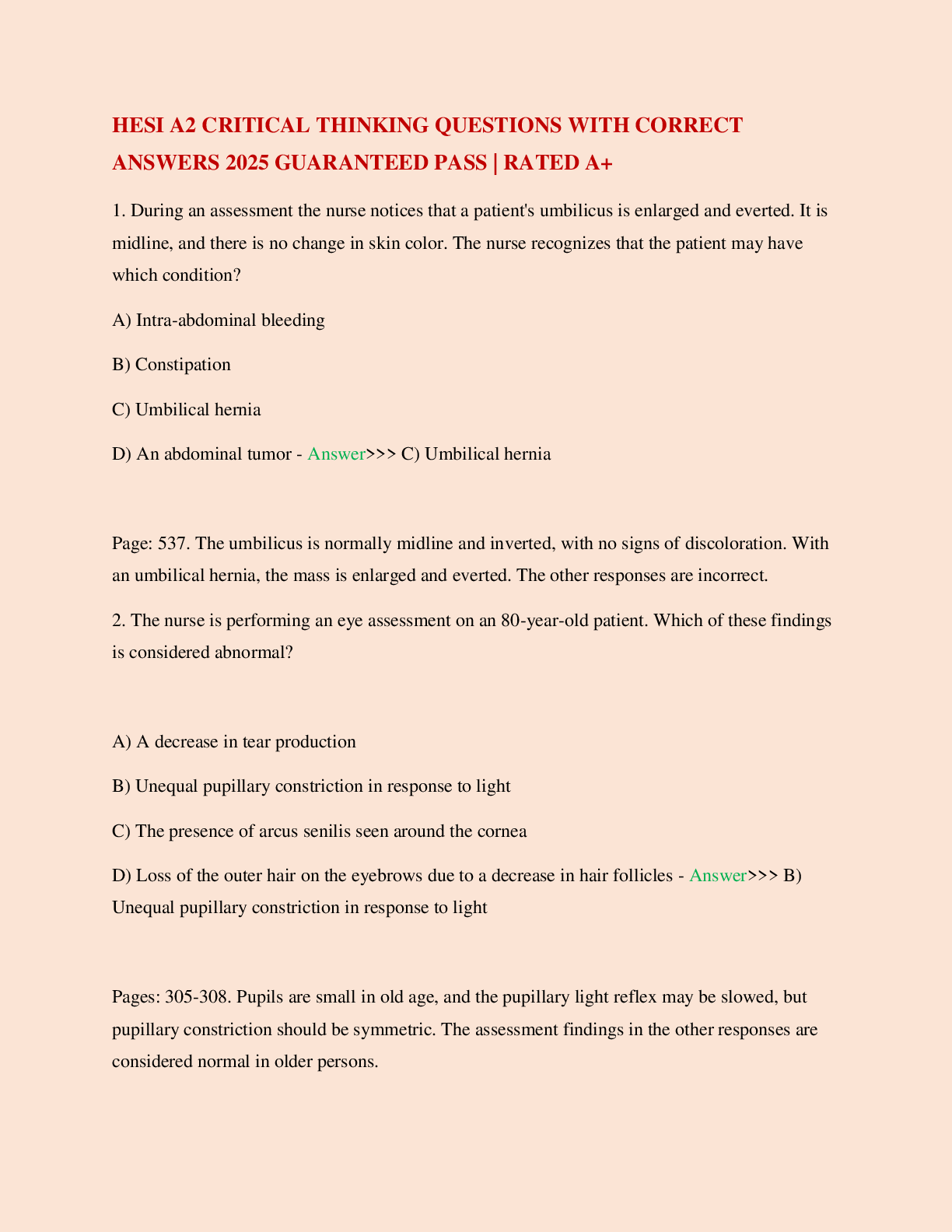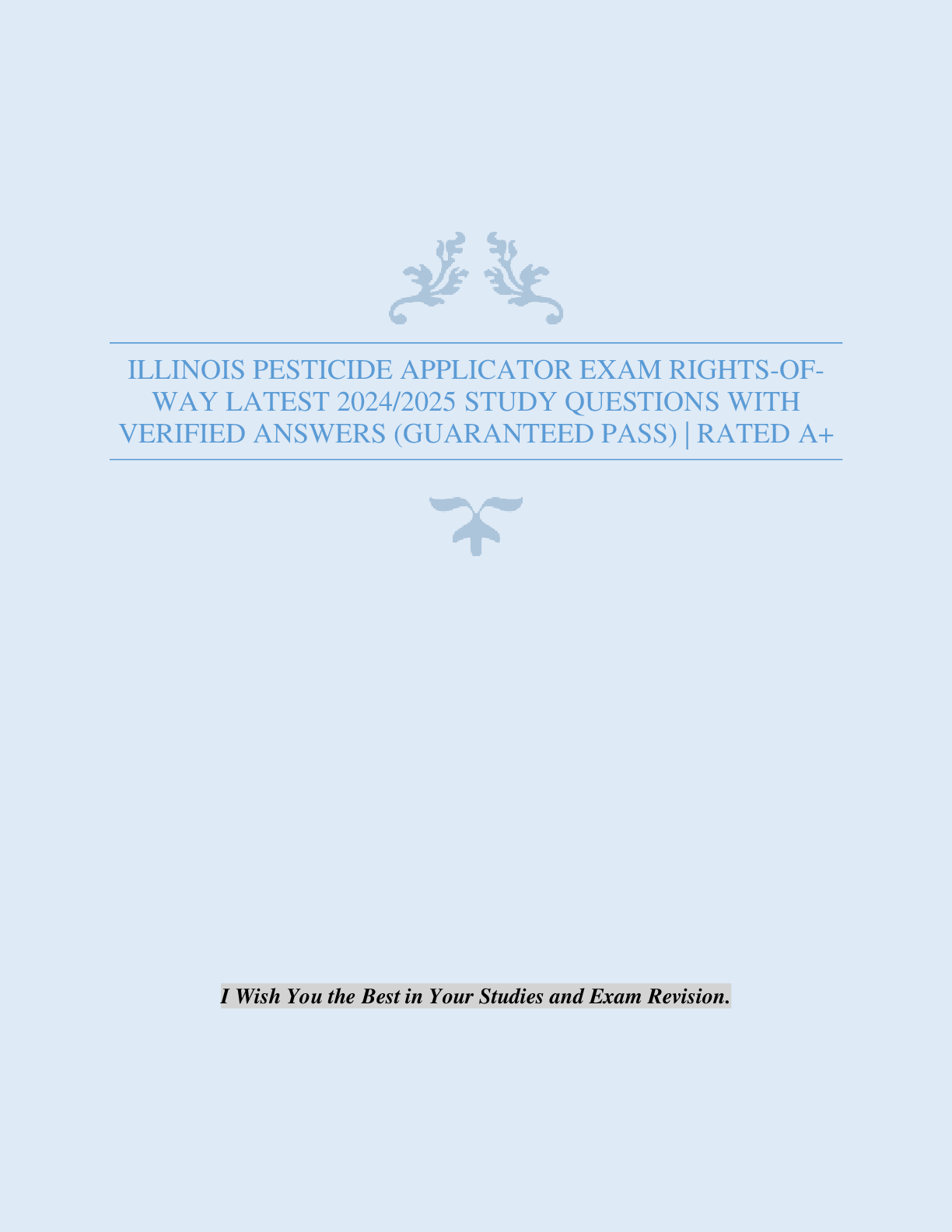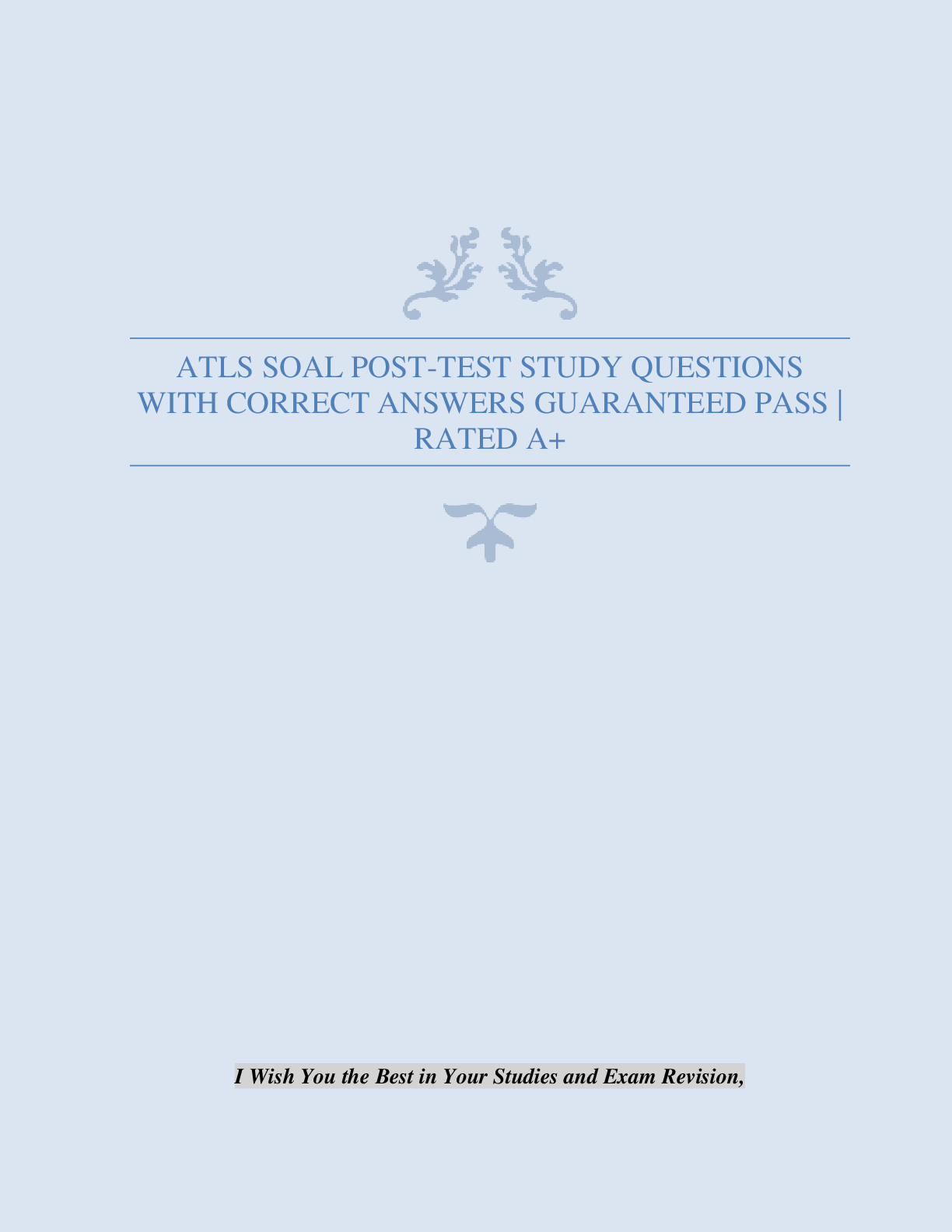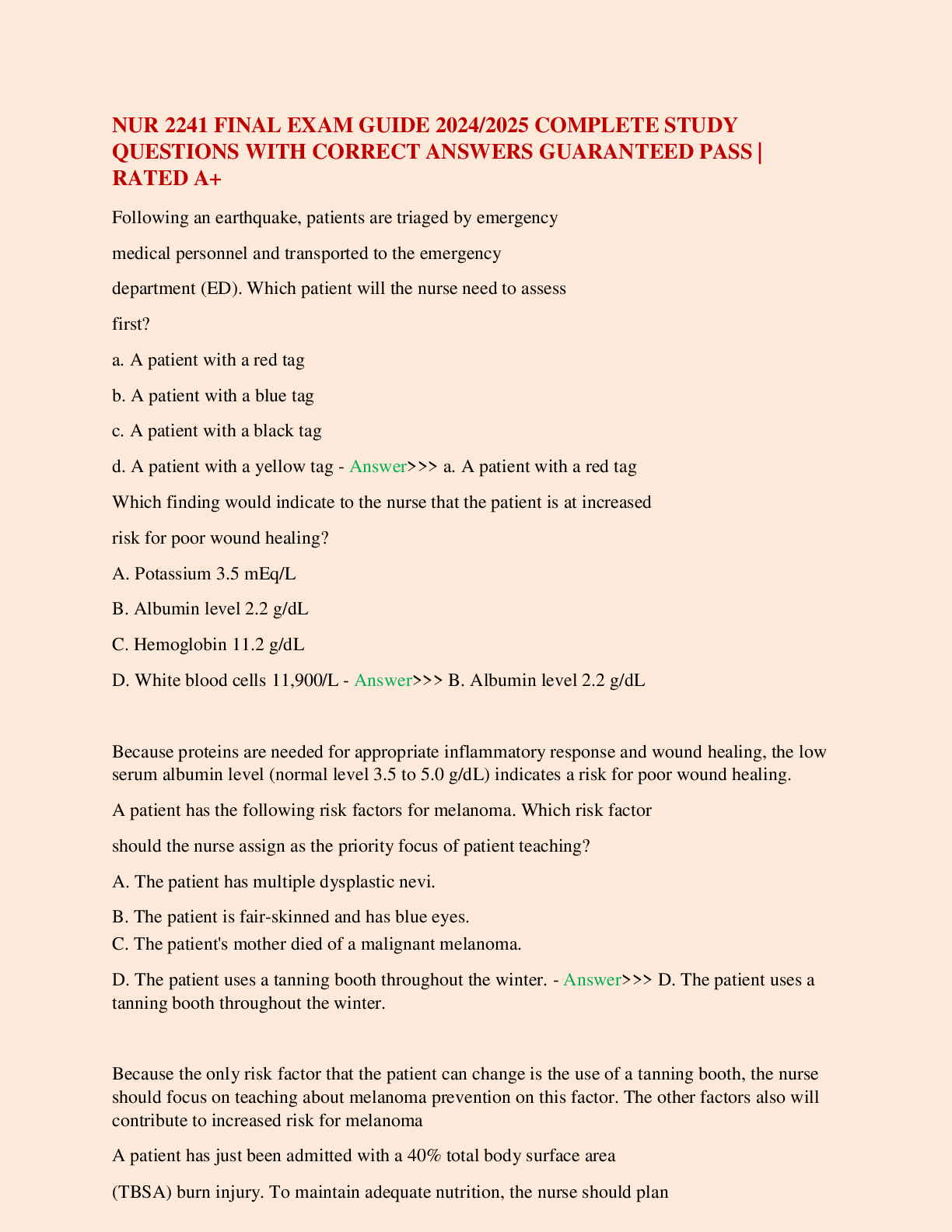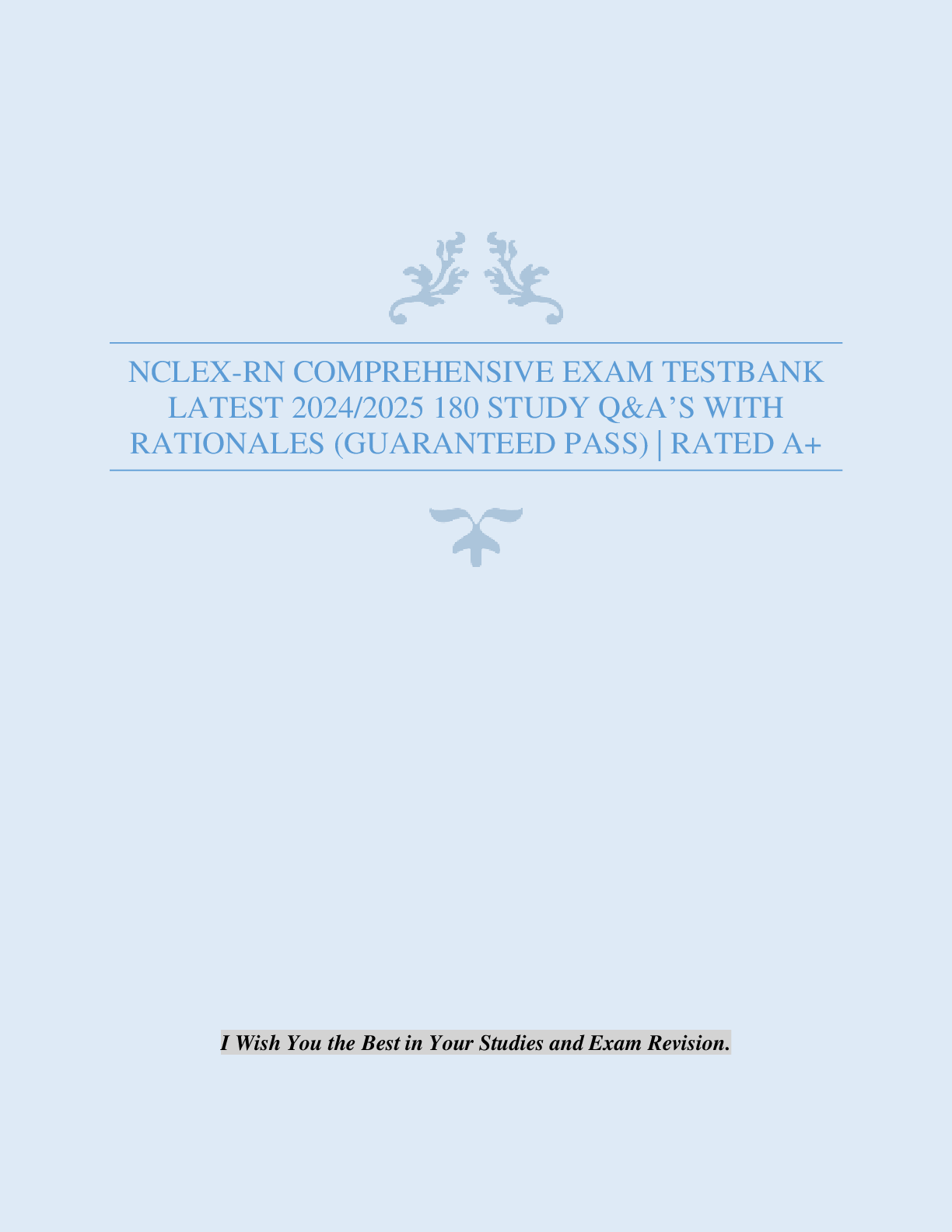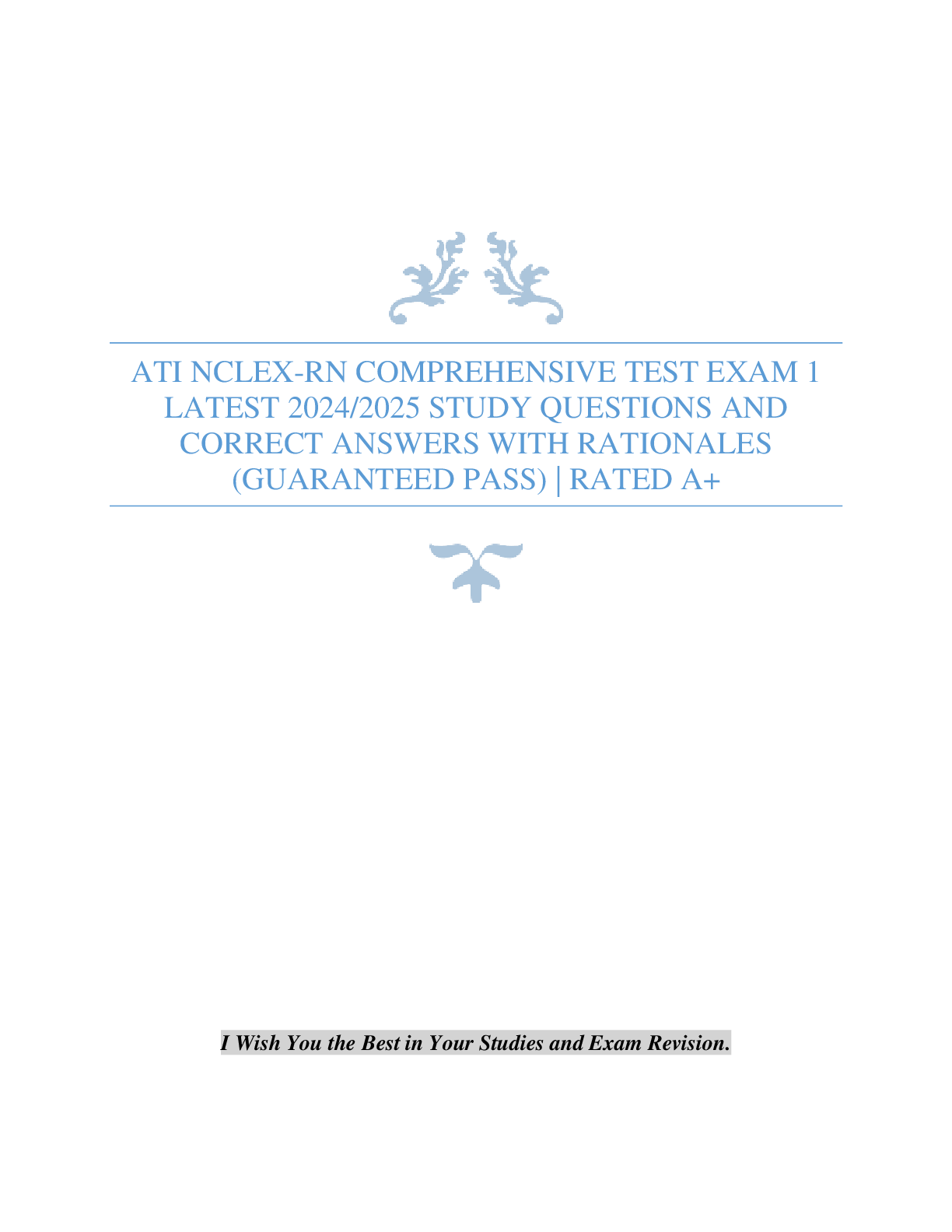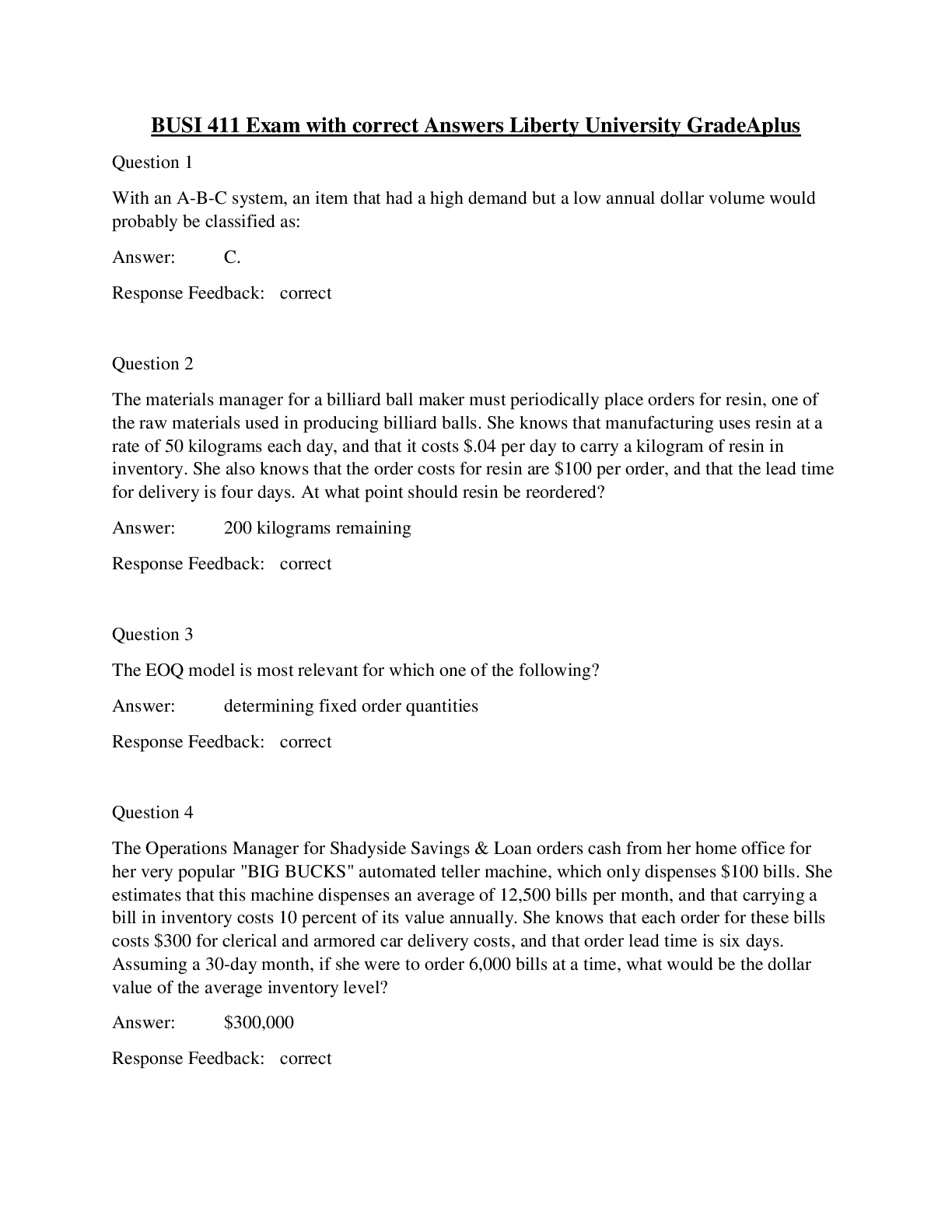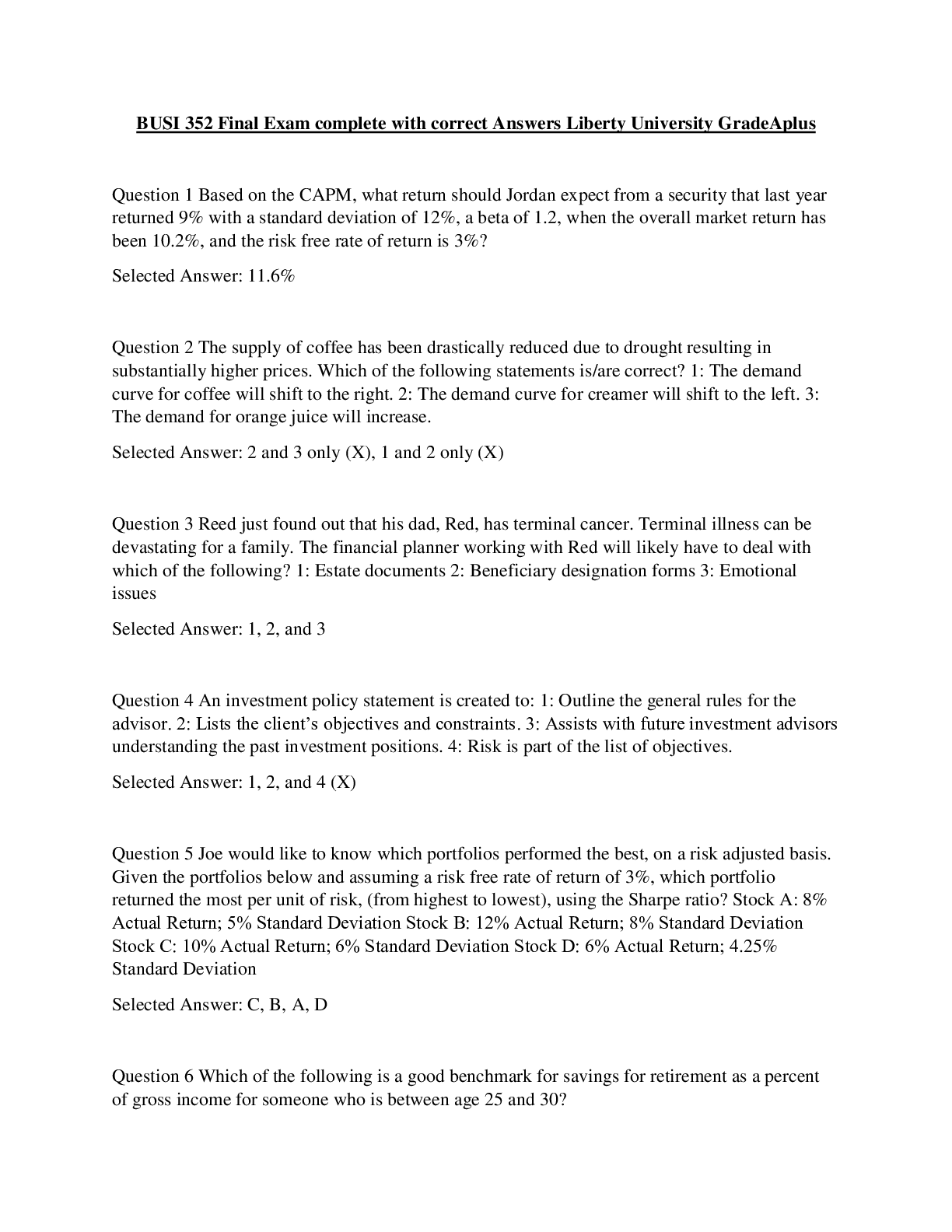HESI RN EXIT > EXAM > HESI 799 RN EXIT TEST EXAM 301-400 PAGES 2025/2026 WITH NEWEST COMPLETE STUDY QUESTIONS WITH CORRECT (All)
HESI 799 RN EXIT TEST EXAM 301-400 PAGES 2025/2026 WITH NEWEST COMPLETE STUDY QUESTIONS WITH CORRECT ANSWERS GUARANTEED PASS | RATED A+
Document Content and Description Below
When assessing a male client, the nurse notes that he has unequal lung expansion. What conclusion regarding this finding is most likely to be accurate? The client has: a- A collapsed lung b- A histo... ry of COPD c- A chronic lung infection d- Normally functioning lungs - Answer>>> a. A collapsed lung Rationale: Unilateral absence of chest movement (or unequal lung expansion because one lung is not moving at all) may be indicative previous surgical removal of that lung, a bronchial obstruction, or a collapsed lung caused by air or fluid in the pleural space. After a routine physical examination, the healthcare admits a woman with a history of Systemic Lupus Erythematous (SLE) to the hospital because she has 3+ pitting ankle edema and blood in her urine. Which assessment finding warrants immediate intervention by the nurse? a. Dark, rust-colored urine b. Urine output 300 ml/hr c. Joint and muscle aches d. Blood pressure 170/98 - Answer>>> d. Blood pressure 170/98 Rationale: SLE can result in renal complication such as glomerulonephritis, which can cause a critically high blood pressure that necessitates immediate intervention. A, B and C are symptoms of glomerulonephritis and should be treated once the blood pressure is under control During an Insulin infusion for a client with diabetes mellitus who is experiencing hyperglycemic hyperosmolar syndrome in addition to the client's glucose, which laboratory value is most important for the nurse to monitor? a. Urine ketones b. Urine albumin c. Serum protein d. Serum potassium - Answer>>> d. Serum potassium Rationale: Electrolyte shifts are common during correction of hyperosmolar and hyperglycemic states. Monitor electrolyte levels at least every 4 hours, or every 2 hours if needed. Monitor serum sodium and potassium levels closely. If needed, use isotonic and hypotonic saline solutions to adjust the patient's sodium level. Despite major potassium loss during diuresis in early HHS stages, many patients initially present in a hyperkalemic state due to dehydration. When fluid and insulin therapy begin, the serum potassium level may drop dramatically. In evaluating the effectiveness of a postoperative client's intermittent pneumatic compression devices, which assessment is most important for the nurse to complete? a. Evaluate the client's ability to use an incentive spirometer b. Monitor the amount of drainage from the client's incision c. Observe both lower extremities for redness and swelling d. Palpate all peripheral pulse points for volume and strength - Answer>>> c. Observe both lower extremities for redness and swelling Rationale: Intermittent compression devices (ICDs) are used to reduce venous stasis and prevent venous thrombosis in mobile and postoperative clients and its effectiveness is best assessed by observing the client's lower extremities for early signs of thrombophlebitis. [Show More]
Last updated: 3 weeks ago
Preview 1 out of 42 pages

Loading document previews ...
Buy this document to get the full access instantly
Instant Download Access after purchase
Buy NowInstant download
We Accept:

Reviews( 0 )
$15.50
Can't find what you want? Try our AI powered Search
Document information
Connected school, study & course
About the document
Uploaded On
Jul 01, 2025
Number of pages
42
Written in
Additional information
This document has been written for:
Uploaded
Jul 01, 2025
Downloads
0
Views
15


